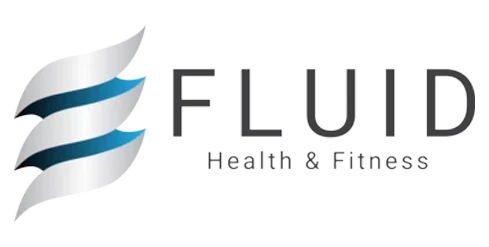
True physical performance is not achieved through intensity alone. It’s the outcome of a progressive, structured system that builds from quality to capacity—ensuring that every movement is supported, symmetrical, and sustainable. At Fluid Health & Fitness, we teach that before you lift more, run farther, or move faster, you must first move well. Periodization modeling offers a strategic framework for advancing movement from basic joint integrity to elite functional output—while mitigating the risks that typically come with overtraining and poor preparation.
This blog introduces you to the science and logic behind our performance training system. You’ll learn how we organize physical training through qualitative standards and staged capacity, and why cardiovascular integration occurs only after structural integrity has been restored.
Why Periodization Matters
Without a structured plan, training quickly becomes reactive—focused on pushing harder instead of progressing smarter. Periodization solves this by breaking down the training year (or cycle) into sequential phases. Each phase builds on the last to:
-
Improve tissue resilience and movement integrity
-
Prevent overuse injuries and performance plateaus
-
Align muscular and cardiovascular systems for coordinated output
-
Match training intensity with physiological readiness
This model moves individuals from rehabilitation to readiness through defined stages, ensuring that volume and load only increase when movement quality allows for it.
The Fluid Model of Performance Development
1. Qualitative Movement Standards Come First
Before load or volume is introduced, all movement must meet standards of:
| Standard | Description |
|---|---|
| Joint Centration | Joints are positioned where muscle forces are balanced and compressive forces are distributed safely. |
| Limb Symmetry | Equal range and strength on both sides of the body. |
| Angle Integrity | Limb movement occurs through safe and efficient angles relative to the joint’s axis. |
2. Phases of Physical Progression
We organize training into five primary stages that match a person’s functional and physiological development:
| Stage | Objective |
|---|---|
| Acute Phase | Restore motor control, reduce compensation, and develop foundational mobility and trunk stability. |
| Subacute Phase | Reintegrate full joint range with coordinated multi-joint movement under light load. |
| Return to Activity | Develop general strength, endurance, and movement volume tolerance. |
| Return to Sport | Train for dynamic tasks involving speed, complexity, or unpredictability. |
| Return to Performance | Peak strength, power, and sport-specific skills for elite function. |
3. Strength and Energy System Periodization
These stages directly correspond to strength training phases and cardiovascular loading:
Strength Periodization Stages
| Phase | Load Focus | Goal |
|---|---|---|
| Stability Training | Low load, high control | Joint alignment and core engagement |
| Endurance Training | Moderate load, higher reps | Volume tolerance and local muscular endurance |
| Hypertrophy Training | Moderate-heavy load | Muscle size and tension adaptation |
| Max Strength Training | Heavy load, low reps | Maximal force output |
| Speed/Power Training | Explosive, fast tempo | Neurological rate development and reactivity |
Cardiovascular Conditioning
Cardio is not front-loaded into training. It’s introduced only after stability and motor control are established, to prevent compensatory fatigue and reinforce joint integrity. Once introduced, it follows this pattern:
| Cardio Phase | Type | Focus |
|---|---|---|
| Aerobic Base | Low-Intensity Steady State (LISS) | Build endurance foundation and recovery capacity |
| Threshold Work | Moderate tempo intervals | Improve aerobic ceiling and buffering capacity |
| Anaerobic Intervals | Short bursts at high intensity | Build power and sport-specific energy demands |
Integrating Biomechanics into Periodization
Periodization is not just about scheduling. It’s about integrating force management and motor control to ensure tissues adapt under healthy conditions. Key principles we incorporate:
-
Tensional and Compressional Force Balance: Your muscles and bones absorb different types of forces. Strength phases must respect how tendons handle tensile load and bones handle compressive stress.
-
Trunk and Core Integration: The trunk is your control center for movement. Load is only introduced after the trunk can efficiently stabilize under gravity and rotation.
-
Weightbearing vs. Non-Weightbearing Muscle Coordination: Load-bearing phases focus on building one-joint stabilizers before progressing to dynamic multi-joint (power-based) actions.
Practical Application: How Periodization Comes to Life in Class
While periodization is rooted in science, its real power emerges in how we apply it daily across our entire training environment. At Fluid, each training session and class cycle is designed to both reflect and reinforce the periodization model through:
-
Ongoing Functional Screening: Every class session includes embedded movement or capacity assessments—whether through tempo control, range-of-motion standards, or work-to-rest ratios that reflect aerobic tolerance.
-
12-Week Formal Reassessment Cycles: Every client is formally re-screened every 12 weeks, regardless of their entry point. This includes standardized tests of joint symmetry, muscle control, cardiovascular efficiency, and tissue response under load.
-
Self-Screening Education: We teach our members how to self-identify readiness using simple metrics—like breath control under load, postural deviation during fatigue, and asymmetry during single-limb tasks—so they know when it’s safe and appropriate to progress.
-
Evidence-Informed Advancement: Progression decisions—whether for strength, mobility, or cardiovascular volume—are tied to research-supported programming, not arbitrary increases. Every movement and capacity benchmark is backed by clinical and sports science principles.
In essence, the class environment becomes a laboratory for applied performance, where coaching, feedback, and structure reinforce safe advancement across all stages of training.
Summary: Progressing with Precision
Periodization is your body’s map from dysfunction to performance. It ensures that:
-
You don’t build strength on top of dysfunction
-
Cardiovascular output supports, not hinders, joint and movement integrity
-
Each phase prepares your tissues for the next demand
-
Adaptation occurs systematically—not randomly
By combining biomechanical analysis, motor control sequencing, evidence-based checkpoints, and energy system alignment, our model doesn’t just get you moving better—it gets you moving with purpose and protection.
Train smart. Advance in stages. Perform with precision.



